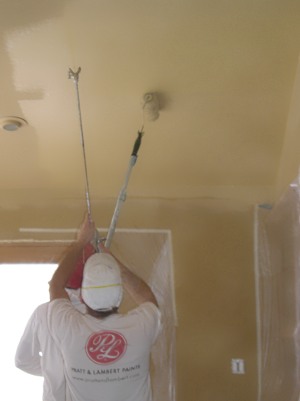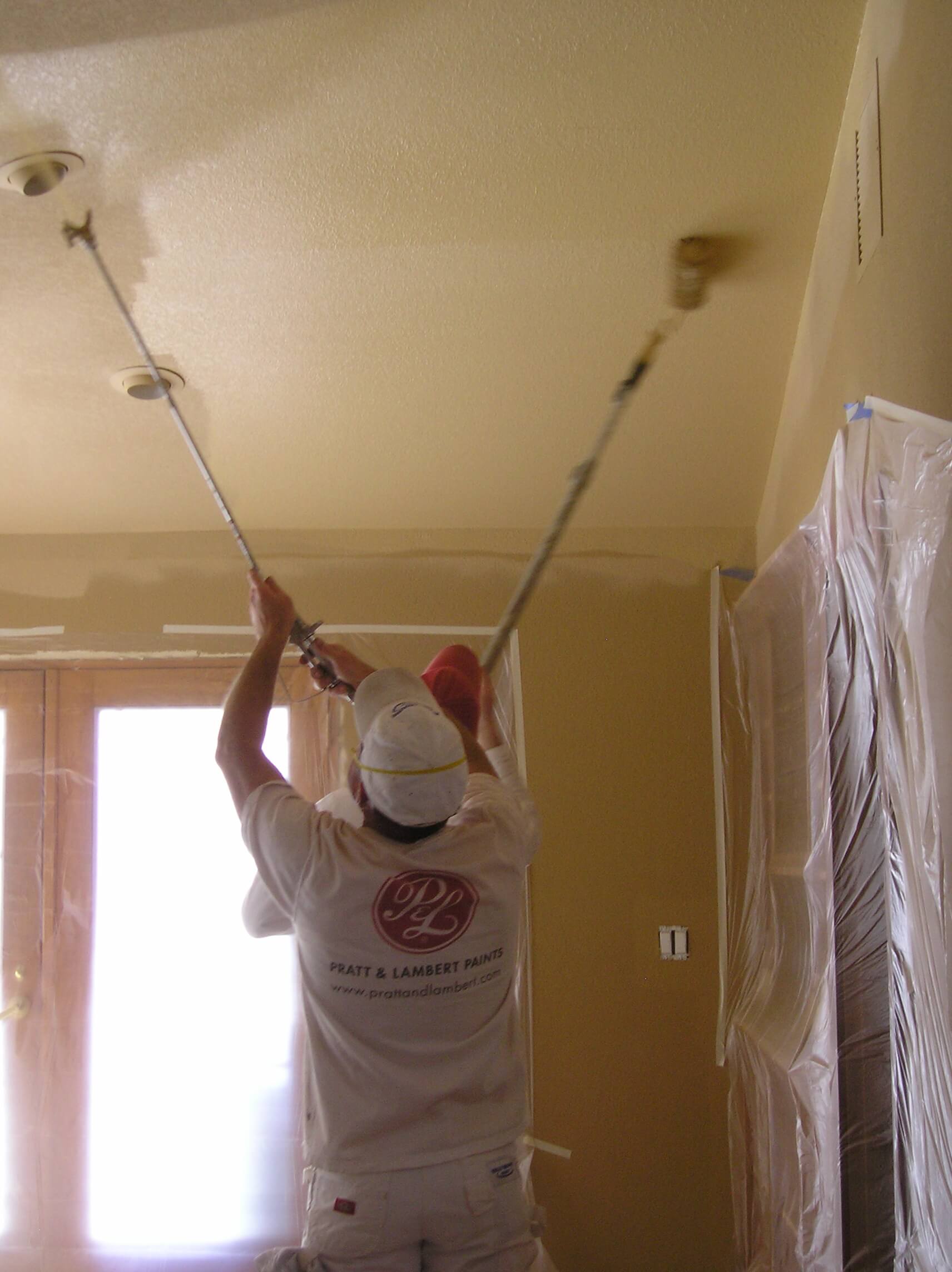
Two house painting techniques used to push the primer or paint into the surface is back rolling and back brushing. This takes place during spray paint application.
Using an airless paint sprayer is a great way to apply either the primer or paint to almost any surface. But, there are limits to what it can do.
Spraying paint tends to bridge small cracks, not filling them completely.
This problem can occur to both interior and exterior surfaces. Such as new textured drywall or old clapboard siding. Immediately using a roller after spraying can push the material into these small cracks and surface imperfections. This creates a filled, protected, smoother surface.
Try back rolling on new textured drywall. Back roll as the wallboard primer is applied. This results in a smoother more even finish.
Back brushing is used in special cases were a roller will not work. The same principles apply. By using a brush instead of a roller, the primer or finish can be pushed around and worked into the surface. For clear finishes having a brush handy is a good idea, to catch any runs.
Try either of these house painting techniques the next time you paint the outside of your home.



One Response
Exterior lifetime-warrantee paints must be backrolled or backbrushed, (both coats) to improve life of paint or make a warrantee claim for fading or other paint problems. On South and west-facing walls, a third coat is advisable. Lighter colored paint jobs may last 20 years or more if moisture is kept from penetrating into walls.